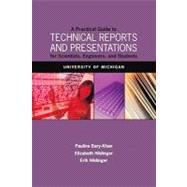
Pauline Bary Khan has been teaching technical communications to undergraduate and graduate students at the University of Michigan, College of Engineering since 1997. She has taught report writing and coached students with their presentation skills in a variety of technical fields. She has also created seminars on resume writing and interviewing skills, worked with PhD students on dissertations and conference papers, and evaluated MBA assessment papers for the Ross School of Business. Prior to her teaching career, Ms.Khan worked to design manufacturing systems in the information technology field, to manufacture and test engine blocks for the automotive industry, and to research coatings for high-speed and high-temperature machining applications. Ms.Khan has a Bachelors of Science degree in Mechanical Engineering and a Masters of Science in Technical Communications, both from the University of Michigan.
Elizabeth Hildinger has taught classes in writing, technical communication, Old and Middle English, literature, and Latin at universities in the U.S. and Canada. She has taught in the University of Michigan College of Engineering's Program in Technical Communication since 2001.
Erik Hildinger has taught classes in technical communication in the University of Michigan College of Engineering's Program in Technical Communication since 2000. He also teaches the processing of legal materials for international law students.
| introduction | |
| General Principles of Technical Communication | |
| Audience and Purpose | |
| Organization of Technical Reports | |
| Elements of Technical Reports bull | |
| Overview/Front Matter bull | |
| The Body of the Technical Report bull | |
| Content Development and Argumentation bull | |
| Concluding Sections bull | |
| References bull | |
| Appendices of Technical Reports | |
| Language and Style in Technical Reports bull | |
| Grammar and Syntax bull | |
| Diction bull | |
| Tone bull | |
| Level bull | |
| Punctuation and Graphic Conventions | |
| Graphics in Technical Reports | |
| Formats for Technical Reports | |
| Business Memoranda and Short Reports | |
| Proposals | |
| Progress Reports | |
| Laboratory or Test Reports | |
| Design Reports | |
| Research Reports | |
| Oral Reports (Oral Presentations) | |
| Appendices | |
| Strategies and Guidelines for Content Development and Argumentation Topic Sentences and Paragraph Development Developing Defensible Claims Selecting Good Evidence Making Effective Use of Source Material | |
| Strategies for Effective Use of Language | |
| Strategies for Development of Effective Graphics | |
| Guidelines for Professional Use of E-mail | |
| Checklists for Assessing, Editing, and Revising Your Documents | |
| Features of Formal Reports | |
| Acknowledgements | |
| References | |
| Table of Contents provided by Publisher. All Rights Reserved. |
The New copy of this book will include any supplemental materials advertised. Please check the title of the book to determine if it should include any access cards, study guides, lab manuals, CDs, etc.
The Used, Rental and eBook copies of this book are not guaranteed to include any supplemental materials. Typically, only the book itself is included. This is true even if the title states it includes any access cards, study guides, lab manuals, CDs, etc.